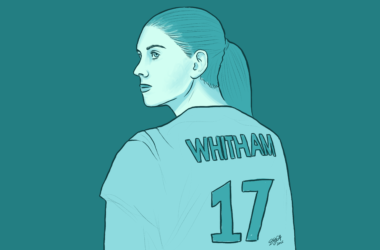
The triathlon and distance running community recently lost one of its brightest stars when Sally Meyerhoff, a 27-year-old triathlete, world class marathoner and Olympic hopeful failed to yield at an intersection while biking. She was hit by a pick-up truck and died on impact. Police reports showed no signs of impairment on the part of the driver.
It’s easy to label this accident another tragic result of reckless training, and indeed Meyerhoff should have yielded to the truck. But Meyerhoff wasn’t the first athlete lost in an accident like this, and she won’t be the last. That’s because the factors that led to these tragedies aren’t going to change anytime soon.
The roads are becoming more crowded. Long distance and triathlon races have taken the casual exercise world by storm; anyone trying to get fit trains for an ultra-marathon, and most take to the roads for training. Some athletes have access to mountain trails and quiet country roads, but an ironman competitor living in Toronto must find a way to do weekly 100 mile training rides, and must resort to the streets for large portions of the ride. As dangerous as the roads are, many runners are also wary of training in city parks after dusk and before dawn.
Technology is the other culprit, making it easier and easier to get distracted. Listening to music, checking Garmin watches or other GPS devices, and even using a cell phone while working out have become the norm. I’m waiting for Apple to release an iHypnosis app so unenthusiastic runners can be in a totally altered state of consciousness while grinding out a 20-miler.
Most elite athletes don’t use these devices, preferring to focus on the training itself. This creates another problem—these athletes are so focused that they prioritize their training over their safety. They think that stopping for two seconds to yield to a car will hamper their workout, or some just get into their “zone” and don’t notice potential hazards.
There’s always been tension between drivers, bikers, and runners. Bikers are notorious for weaving in and out of cars and running stop signs, and runners can’t move fast enough to get out of risky situations. This tension can lead to even more dangerous behaviour.
As in most cities, the streets in Montreal aren’t wide enough to accommodate the bike lanes. Compounding the problem, most bike lanes are often occupied by a traffic jam of commuters, joggers, and serious bikers trying to move at different speeds. Bike lanes often aren’t clearly marked and often aren’t continuous. While running I’ve almost been creamed by a cyclist and flipped them off only to look down and realize that I was in the wrong. West Coast cities with strong environmental focuses like Portland or Vancouver are more accommodating. But the eco-friendly aren’t the only ones that have changed their layouts—Boston recently widened and painted its bike lanes to make them more obvious.
Elite and amateur athletes need to take responsibility for themselves while training. There are some obvious safety tips that all road runners and bikers should adhere to: wear reflective gear at night, avoid unfamiliar or heavily trafficked roads, and look twice before doing anything illegal. But if we want to make any progress towards being healthy or being green, the roads will have to be shared, or else there will be more Sally Meyerhoffs stories.








